How Artist Tony Cragg Pushes New Technical Limits in His Latest Buchmann Galerie Exhibition
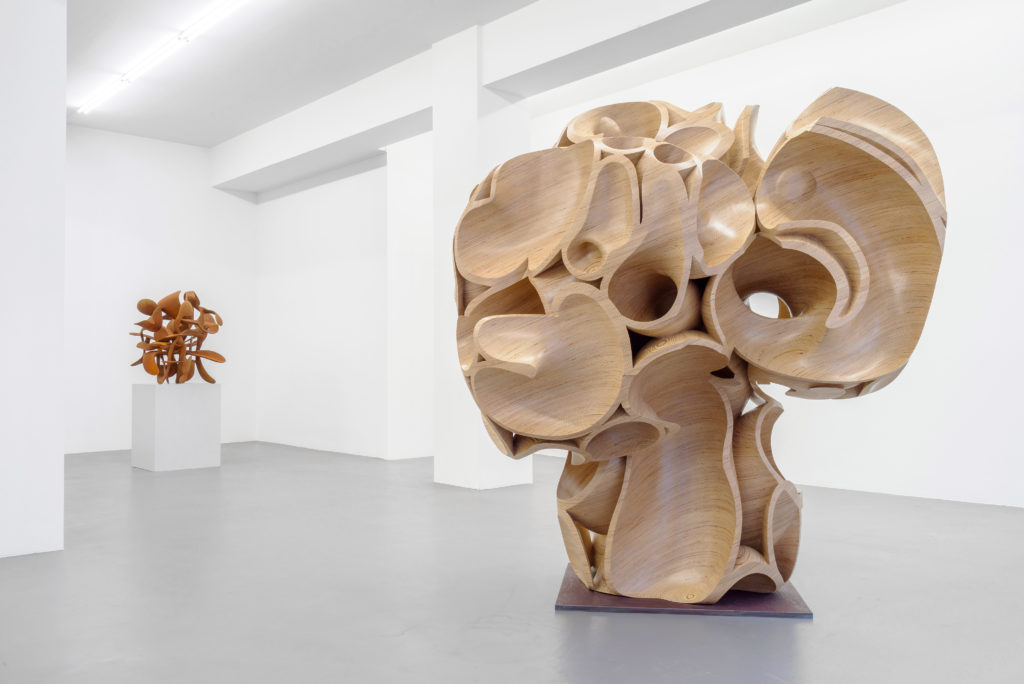

Artnet Gallery Network

When he was younger, 69-year-old British sculptor Tony Cragg would race through the brush dotting the Liverpool landscape where he lived. Now, 50 years later later, those hedges are the inspiration for the venerable artist’s latest show at Buchmann Galerie in Berlin, which brings together new sculptures and drawings.
The influence isn’t hard to see. Take the show’s centerpiece, Untitled (Multiple Skull) from 2017, which is part of Cragg’s newest Skulls series. With its warped, leaf-like forms constructed from layered plywood, the towering sculpture (it’s more than seven feet tall) looks like a gnarled tree in the middle of the gallery.
“When you think about the English landscape, you think of all these hedges running through a field,” says Erik Herkrath, the director of the gallery. “As a child, he would play inside these hedges and look up and see all the branches above him.”
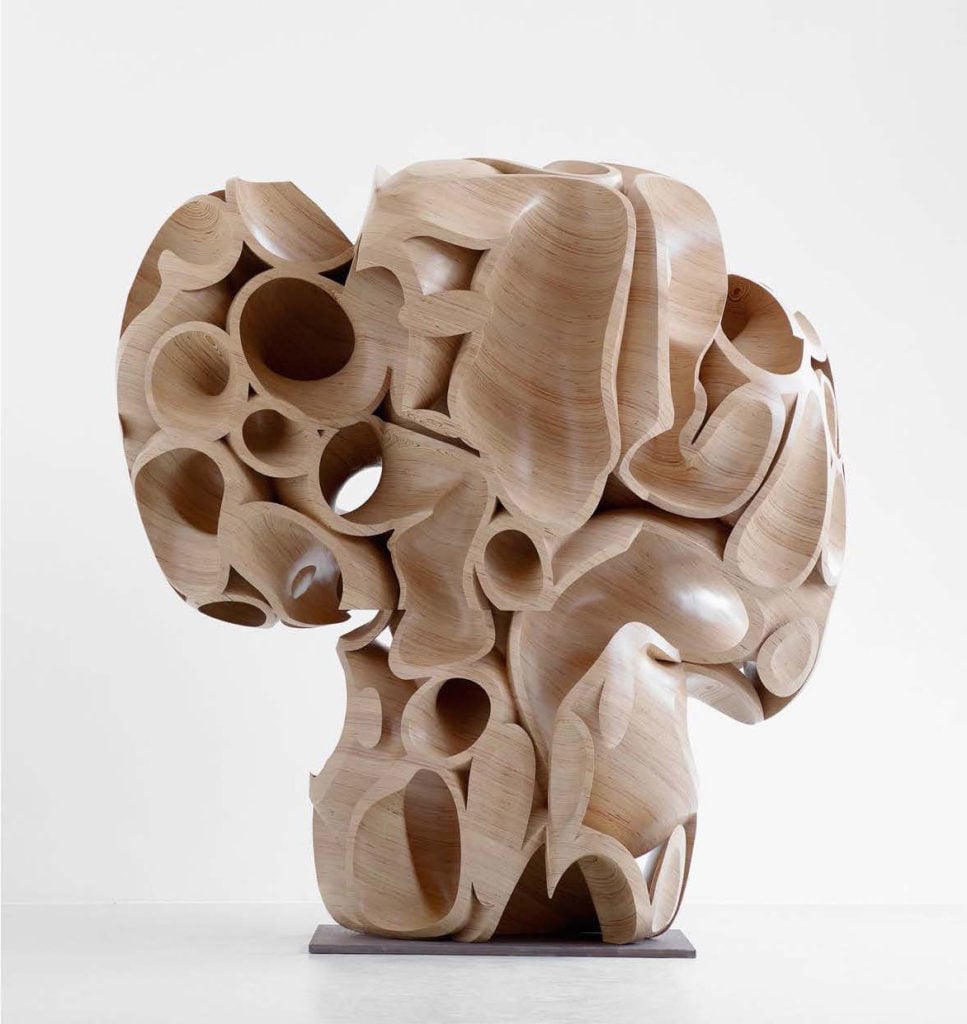
Tony Cragg, Untitled (Multiple Skull) (2017). Courtesy of Buchmann Galerie.
In the gallery, works from Cragg’s other latest series, titled Hedges, are also on view. Constructed from interlocking curvilinear forms, these solid steel works are the purest evocation of the artist’s experience looking up through shrubbery. Like the Skull sculpture, they are not wholly solid objects; they have holes throughout, allowing viewers to see not only the work’s exterior, but its interior as well. These pathways provide a peek into the construction behind the work, and create what Cragg calls a “connection to the greater and more fundamental external and internal forces that make them.”
“These sculptures are not only about the surfaces of the works, but about the whole volume,” Herkrath says. “You can see through them. They breathe.”
Nearby is a series of bronze works, each around three feet high. Untitled (Stack) and Untitled (Double Stack) (both 2018) take the shape of squat, jagged obelisks. Untitled (Incarnation) (2018), a similar bronze piece, looks like a chocolate monument left out in the sun. Meanwhile, Untitled (new split figure) (2018) takes a softer, more organic form, recalling Jean Arp’s sculptural output.
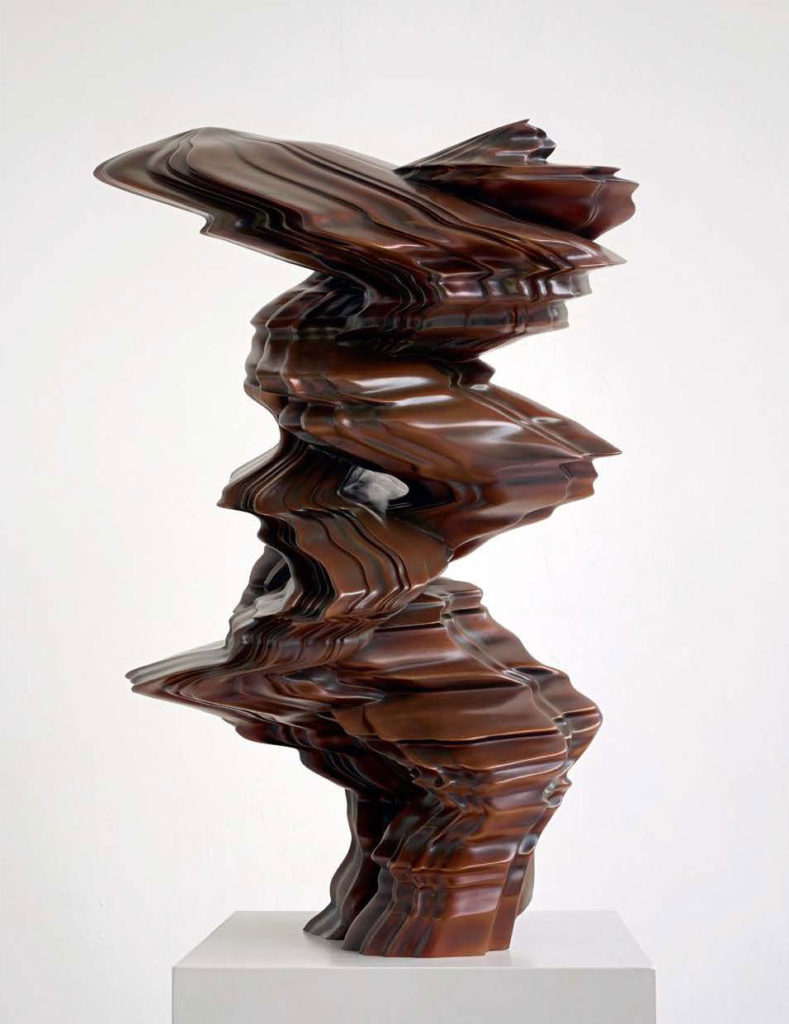
Tony Cragg, Untitled (Double Stack) (2018). Courtesy of Buchmann Galerie.
Buchmann Galerie has represented the artist since 1983. Over that time, Herkrath says, the artist has solidified himself as a master technician, making works that push the limits of what cast sculptures can do.
“Cragg calls himself a materialist,” Herkrath explains. “He’s very interested in using many different materials and getting the most out of them. He works with different foundries for projects, and they always tell him, ‘No, this project is not possible.’ But then he pushes them forward, and in the end, they always find a solution. It’s exciting because it’s really a new way of creating a cast sculpture. He’s always been interested in pushing technical limits.”
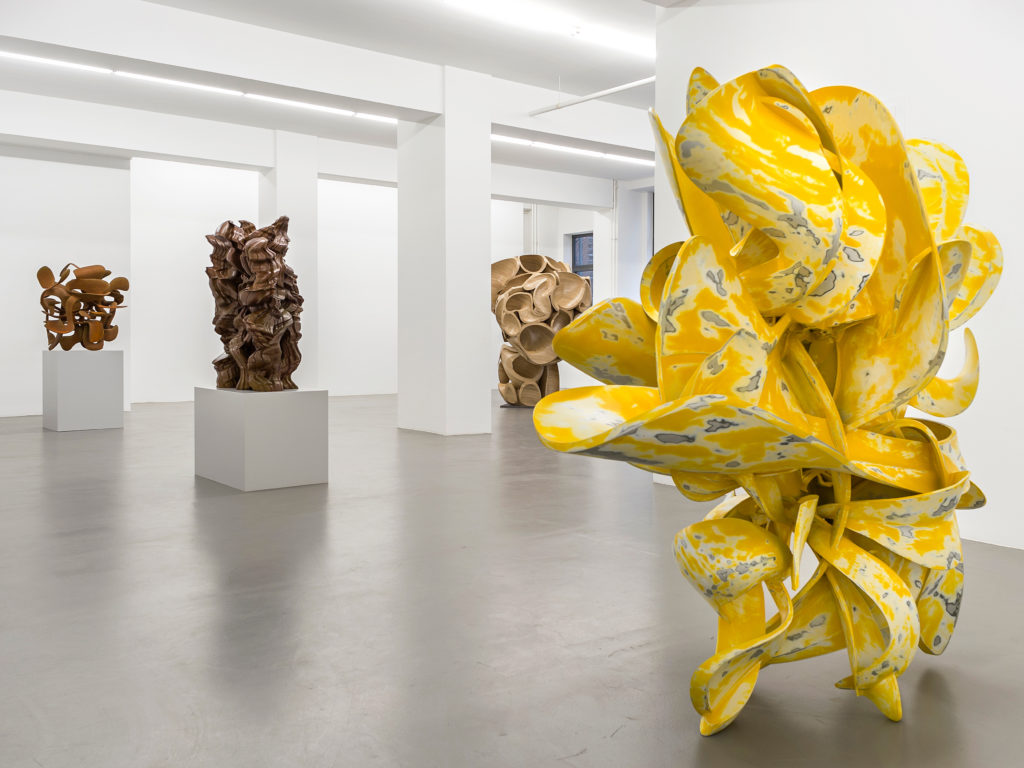
Installation view of “Tony Cragg,” 2019. Courtesy of Buchmann Galerie.
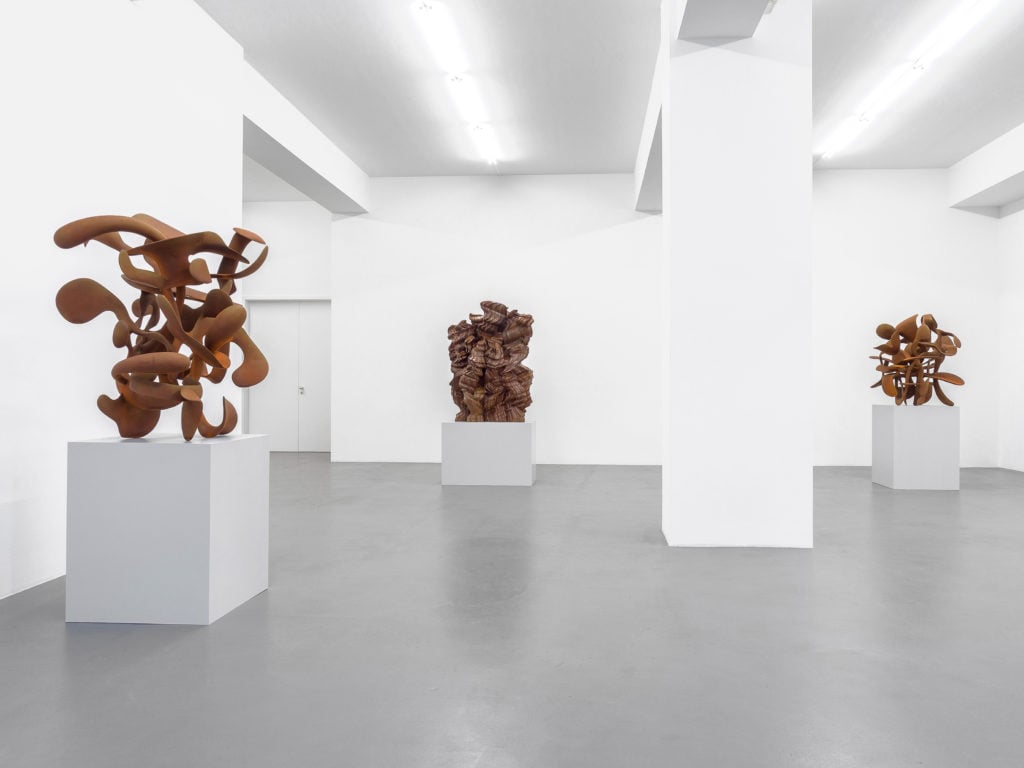
Installation view of “Tony Cragg,” 2019. Courtesy of Buchmann Galerie.
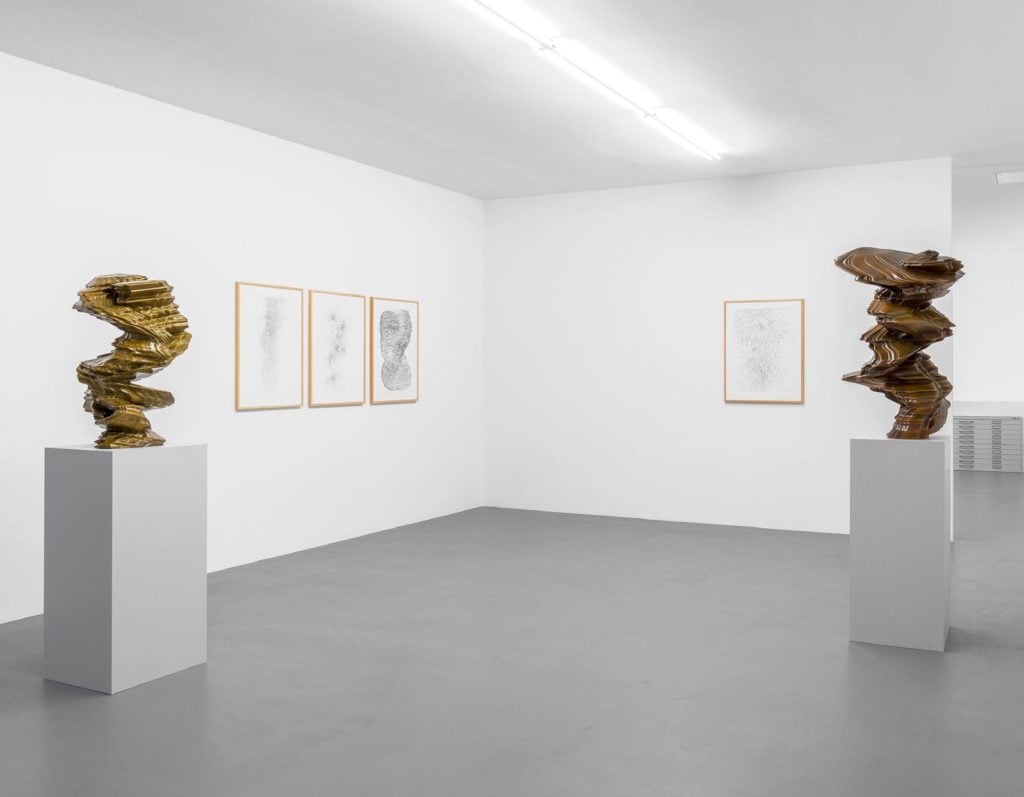
Installation view of “Tony Cragg,” 2019. Courtesy of Buchmann Galerie.
“Tony Cragg” is on view through February 16, 2019 at Buchmann Galerie.